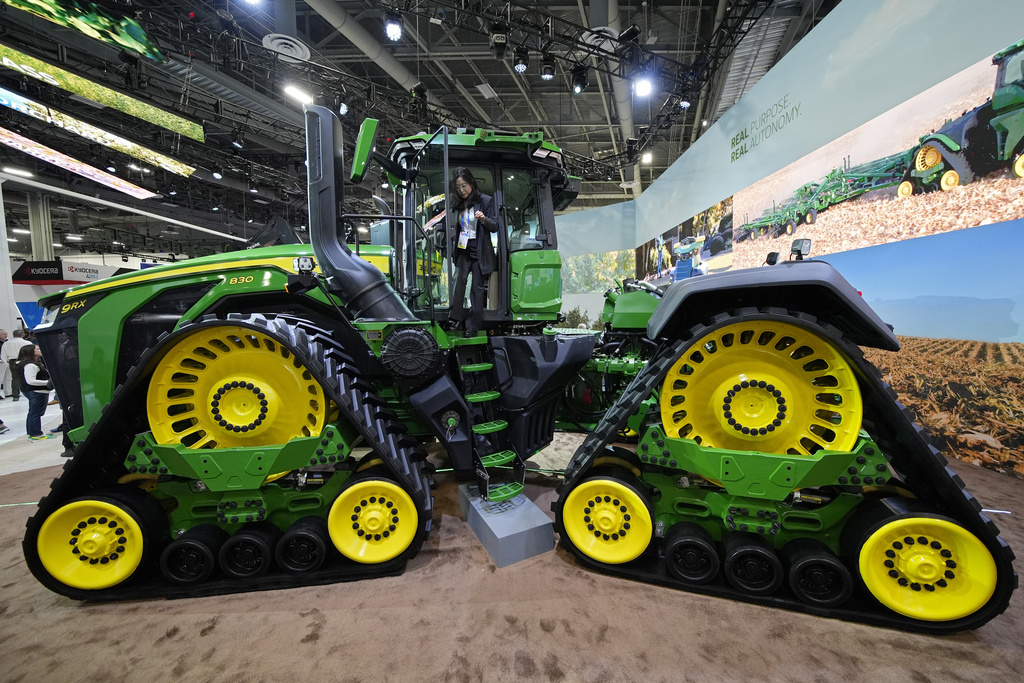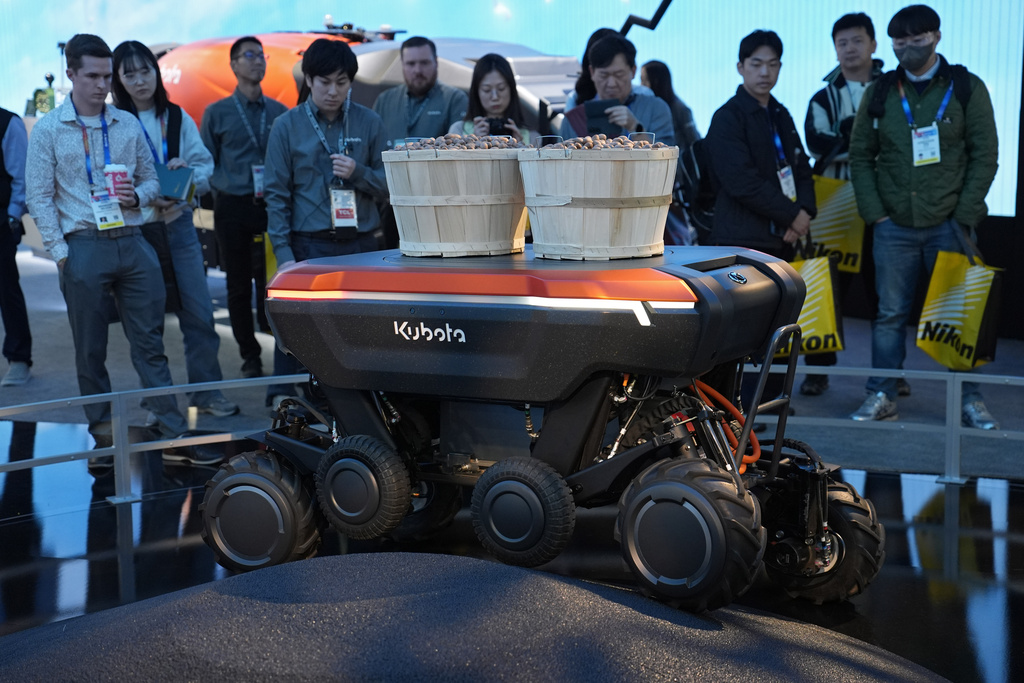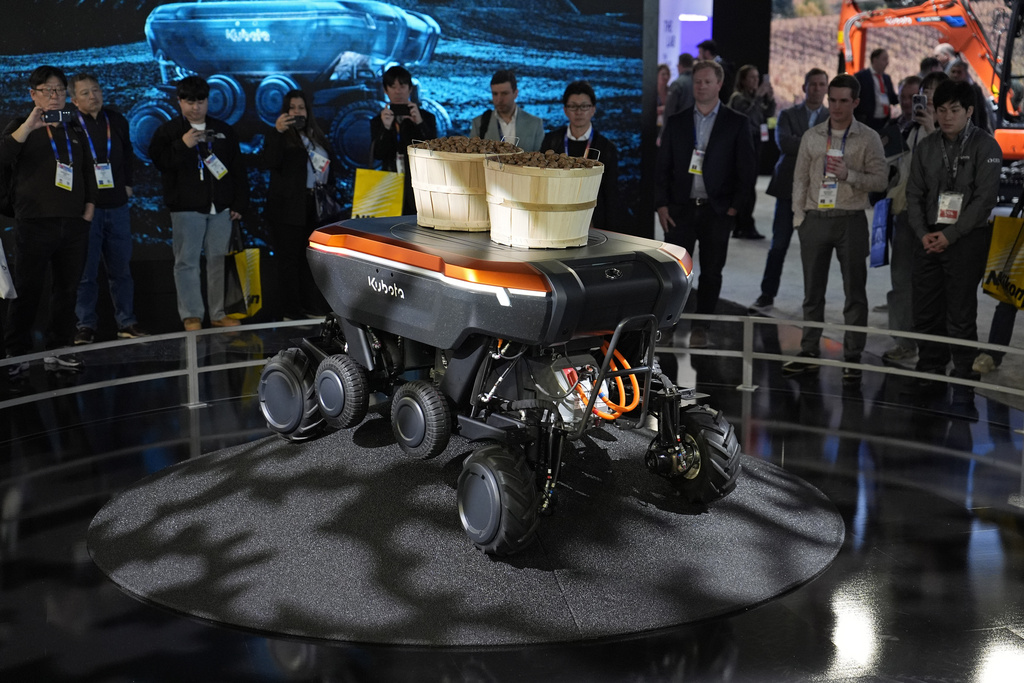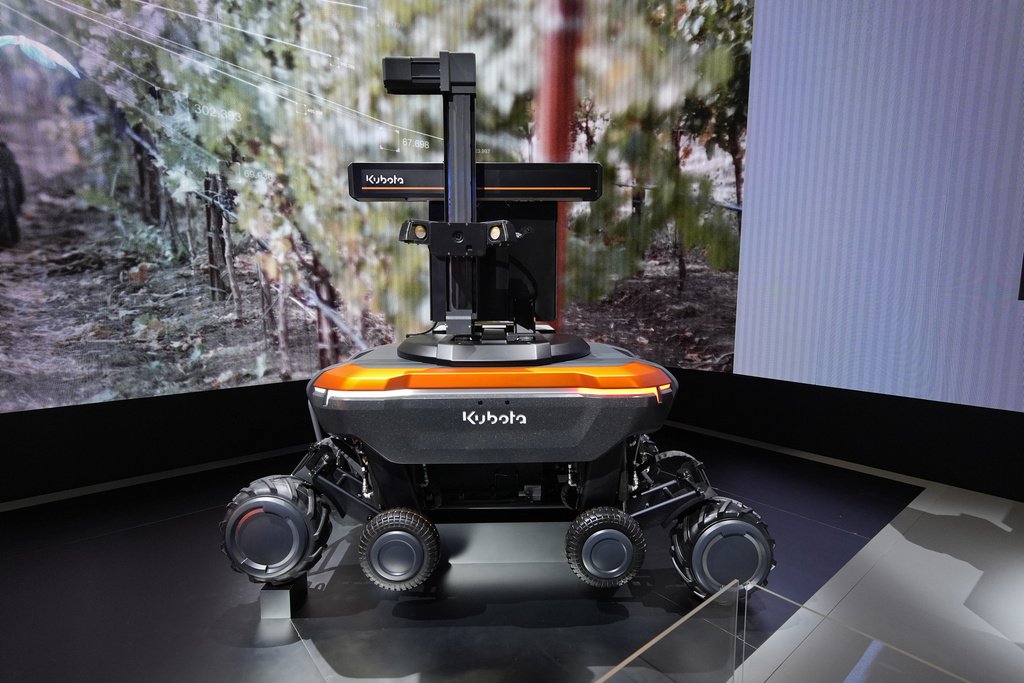LAS VEGAS, NV – When Russell Maichel began cultivating almond, walnut, and pistachio trees in the 1980s, he didn’t have a cell phone. Today, a cutting-edge autonomous tractor navigates his sprawling orchard, dispensing pesticides and fertilizer to safeguard the trees that have long brought him immense satisfaction.

“The idea of getting it right from the start is a huge advantage,” said the first-generation farmer in an interview with The Associated Press at the 2025 Consumer Electronics Show, where John Deere showcased a series of fully self-driving big machinery, including the autonomous tractor that Maichel has been putting into practice on his farm in Northern California.

This year’s tech convention in Las Vegas is focusing heavily on environmental sustainability. Volvo CEO Martin Lundstedt recently announced Volvo’s goal to reach net-zero emissions by 2040. Meanwhile, OshKosh Corporation, based in Wisconsin, is demonstrating its electric fire engines and waste Management vehicles at the show.
“Climate-smart technology is urgently needed, as agriculture is currently facing significant challenges,” said Jacqueline Heard, CEO and co-founder of Enko Chem, which specializes in climate technology solutions for agriculture.
On the CES show floor, it’s evident that farming is taking center stage, with company leaders emphasizing the effects of climate change and worker shortages on farming operations.
At a distance from the John Deere booth that’s displaying autonomous tractors and dump trucks, Kubota, another equipment manufacturer, is featuring its AI technology designed to detect diseases in crops and automatically target areas where pests have been identified.

The chief executive of Kubota Tractor Corporation, Todd Stucke, is confident that artificial intelligence is the future of agriculture, especially given the current trend of increasing heat and intensifying weather conditions.
Stucke spent his childhood on a potato farm in Ohio. His father would go out to hunt for bugs in the evening after dinner, then send Stucke out to spray the crops with pesticides every night.
We covered the entire field, but possibly, we only needed to target a specific section of the field or just a particular plant,” he said. “You can translate that idea to orchards and vineyards, by not spraying the whole area, you can achieve the same goal.

This is referred to as “precision agriculture,” Heard said. “It lets farmers really maximize their land’s potential.”
Farmers could potentially extend the lifespan and enhance the quality of their crops while reducing their reliance on chemicals such as pesticides and fertilizers.
She mentioned that it’s beneficial for the environment and farm owners.
Heard noted it’s not hard to imagine a future where AI assists farmers in optimizing their land use by identifying soil conditions and suggesting the most suitable crop varieties for each area.
It’s possible that due to climate change, they might be better off adapting to a new crop that’s more suited to the changing environment.
At the John Deere booth, Maichel, a nut farmer, expressed optimism that AI developments will allow him to better navigate the unpredictability of farming. Every year’s conditions on his orchard are unlike the previous year’s.
There isn’t a sliding scale we must factor in when it comes to climate change,” he said. “Instead, we tend to conform to the climate we’re faced with. I don’t have the ability to foresee it. We really need to adjust to the changing climate every growing season.
A decade ago, he would have dismissed the idea of autonomous tractors working in his orchard, but he now acknowledges how advancements in tech can help him adapt to industry and environmental shifts.
“Everyone has to have food, don’t they?” Maichel said. “A farmer’s occupation is one that we all must have.”
___
AP video journalist Patrick Aftoora-Orsagos assisted in the creation of this story.
